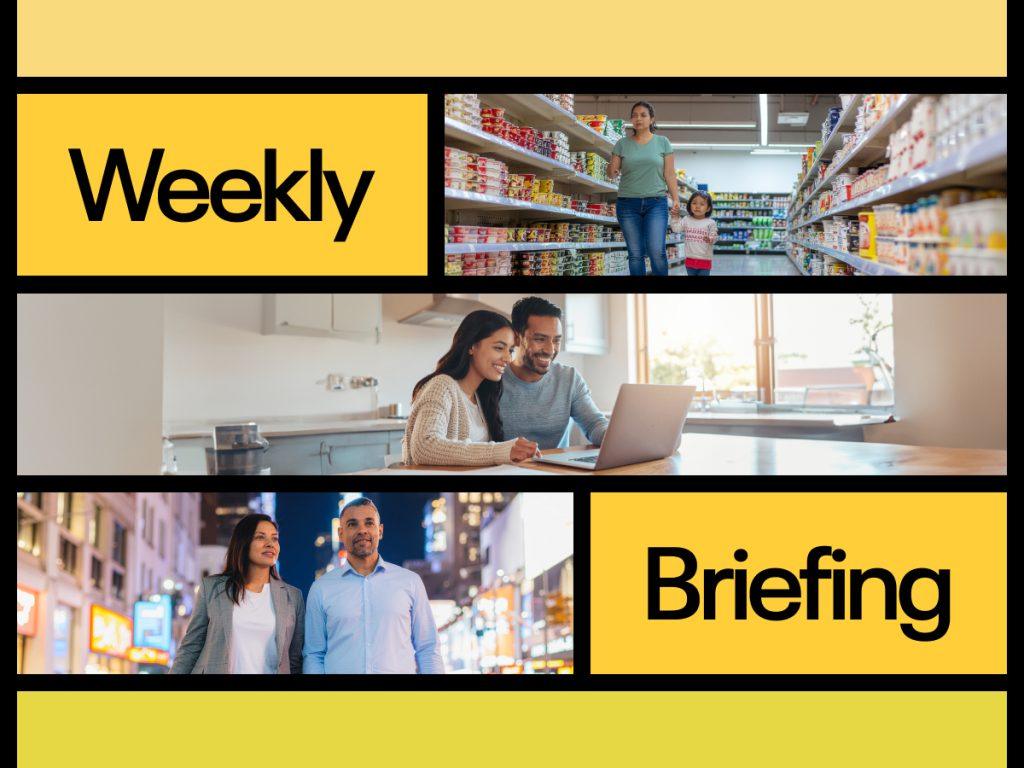The economy doesn’t move in a straight line. In the same week, rate cuts, price pressures, and mixed consumption signals can all coexist. What matters is understanding what might change in your budget, your debts, and your investment plan—so you can turn headlines into practical decisions.
Three signals for your personal finances:
- The Federal Reserve confirmed a 0.25 pp rate cut and left the door open to further reductions.
- Many companies are already passing tariffs through to final prices.
- Spending is increasingly concentrated among higher-income households, which makes the economy more fragile if that group pulls back.
When you read headlines pulling in different directions, it’s normal to hesitate. What doesn’t change is the strategy: organize your finances, have a solid financial plan, and invest with a long-term view. Here’s what each story means for you.
Fed: 0.25 pp cut confirmed (and a bias toward more cuts)
What happened.
The Fed lowered the policy rate by 0.25% (to a 4.00%–4.25% range) and indicated there could be more cuts if the labor market keeps cooling. There was one dissent in favor of a larger cut.
What changed vs. last week.
We moved from projections to fact: the rate-cut announcement is now official, and the message emphasizes risk management in the face of labor-market softening.
What it means for you.
- Credit cards/auto loans/mortgages: rates may decline gradually; the pass-through isn’t immediate.
- Cash (savings accounts/CDs): yields will tend to fall; the pass-through isn’t immediate either.
Simple moves
- Tackle high-cost debt (high APR) with extra payments; the real savings come from reducing principal.
- If you already have an emergency cushion, put your money to work by investing in the stock market through automatic contributions to a diversified portfolio aligned with your risk profile.
- If you’re considering refinancing, get your file in order (income, history, and debt-to-income ratio—DTI) to seize rate windows.
How Finhabits helps
With Finhabits you can build your financial plan with Emma, your virtual financial planner, and invest in the stock market with automatic contributions.
Tariffs: the pass-through to prices is showing up
What happened.
New tariffs and cost adjustments in global supply chains are already showing up in categories like imported foods, apparel and footwear, autos, and some durable goods; recent data indicate the earlier relief has given way to price increases.
What it means for you.
- More pressure on grocery spending and frequent purchases; some durable goods and electronics may be pricier for stretches of time.
Simple moves.
- Compare 1–2 recurring expenses and channel the freed-up savings into your monthly investing. You can compare and save on auto insurance today.
- Plan replacements (electronics, furniture) ahead; avoid “urgent” purchases at price peaks.
- Keep your emergency fund (target months × fixed monthly expenses) in cash to absorb shocks.
How Finhabits helps.
You can shop and save on auto insurance. You can also set up your emergency account from the Finhabits app.
The top 20% of earners is propping up spending… and that raises fragility
What happened.
Recent reports highlight that a record share of consumption comes from higher-income households; if that group cuts spending due to volatility, the impact can quickly spill over to the rest of the economy.
What it means for you.
- For middle/lower-income households, resilience becomes even more important: liquidity, orderly debt, and steady contributions—beyond the headline of the week.
Simple moves.
- If turbulence hits, adjust your budget, not your plan (avoid pausing contributions unless absolutely necessary).
- Set a minimum automatic investment (weekly/biweekly/monthly) that doesn’t depend on how you feel that day.
- Avoid overexposure to a single sector/country; choose diversified investments aligned with your profile.
How Finhabits helps.
Flexible automatic contributions (pause/adjust), diversified portfolios by risk profile, and educational content to keep you informed without noise.
A simple plan to navigate this cycle
- Organize your finances: build your plan and set up an emergency fund.
- Reduce friction: automate extra payments to debt and investing; cut “zombie” expenses.
- Diversify intentionally: align risk–goal–time horizon and avoid micromanaging.
- Stay informed: filter the noise and focus on the actionable.
Key takeaway of the week: it isn’t about predicting the next headline—it’s about having a system that works with good or bad headlines. Tools like Finhabits can help you turn information into habits (planning, education, tracking) and—above all—long-term investing.
Other news of interest
- Trump pushes to end quarterly earnings; SEC takes up proposal — (Wall Street Journal)
- China’s message to Nvidia: We have leverage too — https://www.wsj.com/world/china/china-nvidia-antitrust-probe-us-trade-talks-d00d9462?st=q85vZN&reflink=article_copyURL_share
- China launches discrimination and dumping probes into U.S. chips ahead of trade talks — (Wall Street Journal)
- Nvidia to invest $5 billion in Intel and signs a new collaboration deal — (NY Times)
- The new pitfall of online shopping: a surprise tariff bill — (Wall Street Journal)
Sources:
WSJ: https://www.wsj.com/livecoverage/fed-interest-rate-decision-live-09-17-2025
CBS News: https://www.cbsnews.com/news/trump-tariffs-consumer-price-hikes-inflation-coffee-autos-apparel-cpi/
CNN: https://www.cnn.com/2025/09/18/business/us-k-shaped-economy-spending





